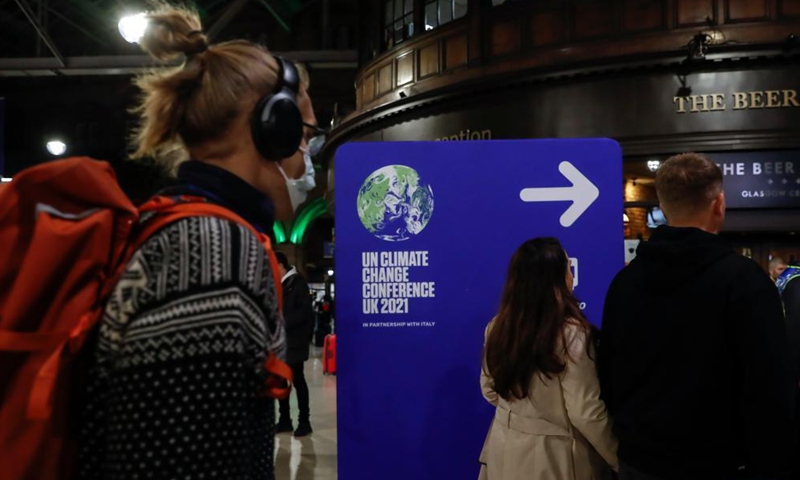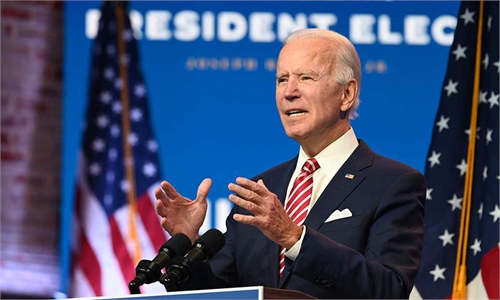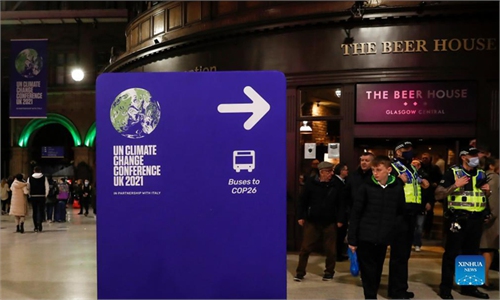Airline emissions must be slashed
New report says cuts needed by 2030 to meet Paris targets

Passengers and police officers are seen at Glasgow Central train station in Glasgow, Scotland, the United Kingdom on Oct. 30, 2021. The 26th United Nations Climate Change Conference of the Parties (COP26) is scheduled from Oct. 31 to Nov. 12 in Glasgow, Scotland. This is the first of its kind since the Paris Agreement came into force.Photo:Xinhua
The world needs "early, aggressive and sustained" government intervention to cut aviation emissions if Paris Agreement temperature goals are to be met, a think tank said Thursday.Airlines must start to slash emissions before the end of the decade and by 2025 if possible, said the International Council on Clean Transportation (ICCT) in a new report.
The 2015 Paris climate treaty enjoins nations to cap global warming at "well below" 2 C, and 1.5 C if possible.
Earth's average surface temperature has already risen 1.2 C above preindustrial levels.
To project aviation sector emissions, the ICCT ran three models assuming different levels of traffic, fuel efficiency and other factors.
All of them improved on a baseline "business-as-usual" scenario, which would emit nearly 50 billion tons of carbon dioxide by mid-century - more than annual emissions from all sources today.
The most optimistic model - which assumes "widespread investments in zero-carbon aircraft and fuels, peaking fossil fuel use in 2025, and zeroing it out by 2050" - would see a reduction of 22.5 billion tons of emissions by 2050.
That would put aviation on course to cut greenhouse gas emissions by "an amount consistent with a 1.75 C warming," said the ICCT.
"But it would require aggressive policies to peak emissions by 2030 at the very latest," it said.
These findings were more positive than anticipated but remain very ambitious, commented lead author Brandon Graver.
"The all-in strategy to deploy clean planes and fuels cuts emissions even deeper than we expected," he said.
"But public policies will be needed to peak emissions as early as 2025 to put aviation on a 1.75 C pathway."
IATA, which represents 290 airlines accounting for 83 percent of global air traffic, pledged in October 2022 to achieve net-zero carbon emissions by 2050.
The aviation industry is among the fastest-growing sources of greenhouse gases, and one of the most difficult sectors to decarbonize.
Many experts are counting on innovations in hydrogen fuels or so-called sustainable air fuels made from non-fossil fuel renewable source to meet industry targets.
Improvements in operational efficiency also hold potential for reducing the sector's carbon pollution.
The International Air Transport Association (IATA) has put the cost of such improvements at $1.55 trillion over 30 years.
IATA projects continued growth in air travel.
The industry expects to carry 10 billion passengers by the middle of the century, more than double the 4.5 billion in 2019, the most recent full year unaffected by the COVID-19 pandemic.
AFP



